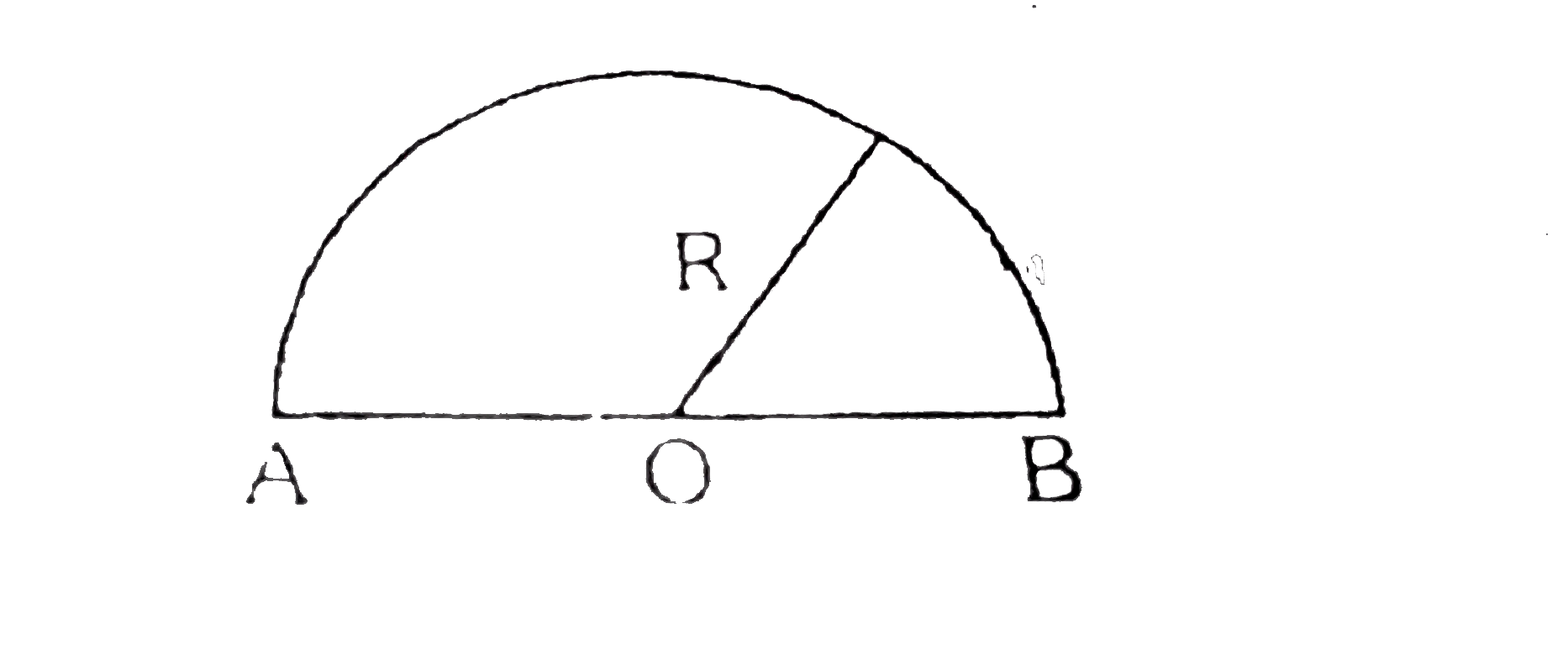Distance is a scalar quantity. Displacement is a vector quqntity. The magnitude of displacement is always less than or equal to distance. For a moving body displacement can be zero but distance cannot be zero. Same concept is applicable regarding velocity and speed. Acceleration is the rate of change of velocity. If acceleration is constant, then equations of kinematics are applicable for one dimensional motion under the gravity in which air resistance is considered, then the value of acceleration depends on the density of medium. Each motion is measured with respect of frame of reference. Relative velocity may be greater/ smaller to the individual velocities.
A particle is moving along the path y=4x2. The distance and displacement from x=1 to x=2 is (nearly) :-
√150,12
√160,20
√200,30
√150,20
The correct Answer is:A
To solve the problem of finding the distance and displacement of a particle moving along the path y=4x2 from x=1 to x=2, we will follow these steps:
Step 1: Find the initial and final coordinates
First, we need to determine the coordinates of the particle at x=1 and x=2.
- For x=1:
y=4(1)2=4
So, the initial coordinates are (1,4).
- For x=2:
y=4(2)2=16
So, the final coordinates are (2,16).
Step 2: Calculate the displacement
Displacement is the straight-line distance between the initial and final points. We can use the distance formula for two points (x1,y1) and (x2,y2):
Displacement=√(x2−x1)2+(y2−y1)2
Substituting the coordinates:
Displacement=√(2−1)2+(16−4)2
Calculating:
=√(1)2+(12)2=√1+144=√145
Thus, the displacement is approximately 12.04.
Step 3: Calculate the distance
The distance traveled by the particle along the curve can be found using the arc length formula. The arc length s from x=a to x=b is given by:
s=∫ba√1+(dydx)2dx
First, we need to find dydx:
y=4x2⟹dydx=8x
Now, we can substitute this into the arc length formula:
s=∫21√1+(8x)2dx=∫21√1+64x2dx
This integral can be solved using a numerical method or a calculator. For simplicity, we can approximate it:
- Evaluating the integral gives us a value slightly greater than the displacement.
Conclusion
After calculating both the displacement and the distance, we find:
- Displacement ≈12.04
- Distance ≈12.25
Thus, the distance and displacement from x=1 to x=2 are nearly equal to 12 and slightly greater than 12, respectively.
First, we need to determine the coordinates of the particle at x=1 and x=2.
y=4(1)2=4
So, the initial coordinates are (1,4).
y=4(2)2=16
So, the final coordinates are (2,16).
Displacement is the straight-line distance between the initial and final points. We can use the distance formula for two points (x1,y1) and (x2,y2):
Displacement=√(x2−x1)2+(y2−y1)2
Substituting the coordinates:
Displacement=√(2−1)2+(16−4)2
Calculating:
=√(1)2+(12)2=√1+144=√145
Thus, the displacement is approximately 12.04.
The distance traveled by the particle along the curve can be found using the arc length formula. The arc length s from x=a to x=b is given by:
s=∫ba√1+(dydx)2dx
First, we need to find dydx:
y=4x2⟹dydx=8x
Now, we can substitute this into the arc length formula:
s=∫21√1+(8x)2dx=∫21√1+64x2dx
This integral can be solved using a numerical method or a calculator. For simplicity, we can approximate it:
- Evaluating the integral gives us a value slightly greater than the displacement.
After calculating both the displacement and the distance, we find:
- Displacement ≈12.04
- Distance ≈12.25
Topper's Solved these Questions
- BOOK - ALLENCHAPTER - KINEMATICSEXERCISE - Comprehension#25videos
KINEMATICS
- BOOK - ALLENCHAPTER - KINEMATICSEXERCISE - Comprehension#35videos
KINEMATICS
- BOOK - ALLENCHAPTER - KINEMATICSEXERCISE - Assertion-Reason20videos
KINEMATICS
- BOOK - ALLENCHAPTER - ERROR AND MEASUREMENTEXERCISE - Part-2(Exercise-2)(B)22videos
ERROR AND MEASUREMENT
- BOOK - ALLENCHAPTER - KINEMATICS (MOTION ALONG A STRAIGHT LINE AND MOTION IN A PLANE)EXERCISE - BEGINNER S BOX-78videos
KINEMATICS (MOTION ALONG A STRAIGHT LINE AND MOTION IN A PLANE)
Similar Questions
Distance is a scalar quantity. Displacement is a vector quqntity. The magnitude of displacement is always less than or equal to distance. For a moving body displacement can be zero but distance cannot be zero. Same concept is applicable regarding velocity and speed. Acceleration is the rate of change of velocity. If acceleration is constant, then equations of kinematics are applicable for one dimensional motion under the gravity in which air resistance is considered, then the value of acceleration depends on the density of medium. Each motion is measured with respect of frame of reference. Relative velocity may be greater/ smaller to the individual velocities.
A particle moves from A to B. Then the ratio of distance to displacement is :-
 View Solution
View SolutionDistance is a scalar quantity. Displacement is a vector quqntity. The magnitude of displacement is always less than or equal to distance. For a moving body displacement can be zero but distance cannot be zero. Same concept is applicable regarding velocity and speed. Acceleration is the rate of change of velocity. If acceleration is constant, then equations of kinematics are applicable for one dimensional motion under the gravity in which air resistance is considered, then the value of acceleration depends on the density of medium. Each motion is measured with respect of frame of reference. Relative velocity may be greater/ smaller to the individual velocities.
A person is going 40 m north, 30m east and then 30√2m southwest. The net displacement will beView SolutionGive reason for the following.
Displacement can become zero, but distance cannotView SolutionWhen is the magnitude of displacement equal to the distance ?
View Solution(A):Acceleration is the rate of change of velocity .
(R ):A body having nonzero acceleration can have a constant velocity.View SolutionIs displacement a scalar or a vector quantity?
View SolutionCan a body have zero velocity and finite acceleration?
View SolutionIf the displacement of a particle is zero, then distance covered by it
View SolutionIf the displacement of a particle is zero, then distance covered by it
View SolutionCan displacement be zero even if distance is not zero ? Give one example to explain your answer.
View Solution

